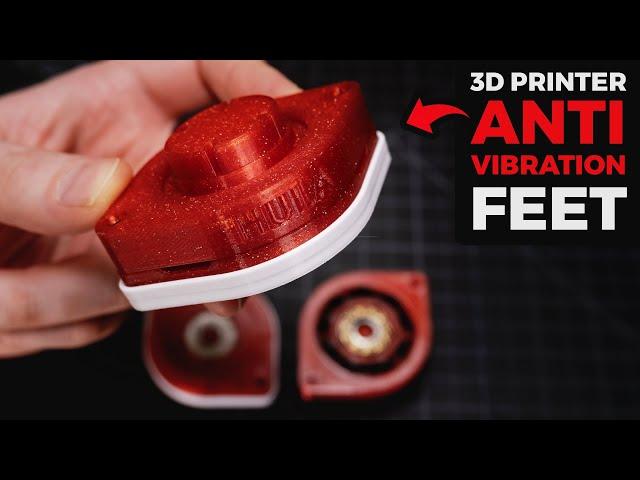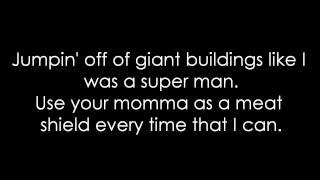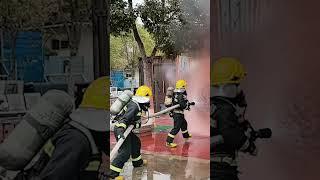
HULA Anti-Vibration Feet for 3D PRINTERS – Do they WORK?
Комментарии:

I build some similar feet for my modded Sapphire Pro. It is basically standing on TPU springs. My printer seems to be a bit too heavy for this to work well long term and the mass isn't centered so it shifts to the back feet.
That being said I noticed a pretty big improvement for my max accel and the noise is a lot better with these feet and being on the floor vs on top of some drawers.
Edit: My guess is that if your frame is solid then it probably doesn't help that much if at all but if your frame isn't that strong this might have a bigger impact. Being allowed to swing back and forth should take a bit of force that would normally be absorbed by the frame away.

So pretty much every video on these things has proven them to be almost useless for better print quality. The only thing these things do is make your desk shake less and reduce noise.
Ответить
I came across the 'sherpa crew' a 'dual stage' extruder. It might be interesting to see if such a design has benifits for flow rate/layer consistency
Ответить
Has your PCBway SLS nylon parts creep ?
Ответить
I use Sorbothane Duro 50 1.25" hemispheres on my bed slinger. Works wonders at isolating and damping. And you don't have to assemble anything.
Ответить
Thanks for the good piece !
ps. as much as I understand you don't intend to make this channel focus on specific models, the finetuning of your P1S still is very interesting to me :-) perhaps you could do a side video with all the things you put in place for best results?

ModBot also made a video covering HULA two weeks ago and over there i made a very long comment explaining why this is a waste of time if you are chasing print quality. i predicted that if enough people tried it, results will be extremely varied and thus be hard to justify asking most people to try spending the time and money building four of these things compared to trying something simple, cheap and proven like a stone plate on foam, where the foam itself performs both isolation and damping overwhelming more effectively than the small surface area of four tiny feet, and the stone gives an extremely stiff surface to avoid frame flexure which would be unavoidable when you add soft feet to a shaking printer.
so i made the case that it would make much more sense to put the printer on stone and then mount the four HULA feet underneath that if furniture noise is the main concern. that should get you great noise reduction while reducing harm to quality.
people are also conflating furniture noise reduction with improved print quality when in fact these are two very different goals. what HULA does first and foremost is vibration isolation, which reduces energy transmission to the furniture, reducing furniture noise, but necessarily also prevents the furniture from helping to then dissipate that energy (furniture damping effect). this means more of the vibration will be left to input shaper to mitigate. considering that the input shaper models are optimized for low bandwidths (very good at mitigating specific resonant frequencies but not others), furniture isolation may or may not be better for print quality. you need to be open to the possibility that whatever table you have your printer sitting on right now may actually already be working well together with input shaper (by providing large bandwidth damping of the frequencies especially around the peak that input shaper cannot also optimize for) to make quality prints and that isolating that table could make quality worse. because there are so many different printers and even more types of furniture, this is what led me to conclude that it would be very unlikely that HULA can produce a statistically significant improvement for everyone (regarding print quality). seismic damping needs to be tuned, just like input shaper needs to be tuned. you would need to iterate on the TPU portion of the HULA feet to get the best result for your particular setup and that is not something that is easy to do.

You would probably get better results if you made one large Hula that the printer rides on as that will provide a much larger damping area.
You are hitting a hard stop on those little feet.
Try scaling it up and use the foam below the scaled up one and I bet you will see some significant improvements.

thanks for taking the time to do all the testing. like many 3d printer mods this is a solution that doesn't solve any problems
Ответить
Why do you think we aren't seeing a spring and pressureized damper approach?
Ответить
Those dampeners do look really flimsy to me. If shop machines have dampening, they always seem to have chonky hard-rubber dampeners.
Very interesting that they actually helped with the big bed slinger. That's useful information.

i tried isoacoustics speaker feet i have lying around on my corexy and it damped vibration transmission to my rack. print quality wise seems the same. i have since switched to cheaper sorbothane feet.
Ответить
i bought Spring Isolation pad Shock Absorber feet for subwoofers for 10 bucks and work better than those. also these only work if you have a wobbly desk. using them on stable surfaces makes them worse.
Ответить
I decided to try these out for my K1. Got the solid parts printed, but I'm waiting on VoxelPLA to ship the hardware... ordered over 2 weeks ago. Good video with the various tests, especially considering the instructions for HULA say to run RC before installing. Which test model did you use for your tests?
Ответить
I put my printer on squash balls. They come in different hardness/dampening values. It really helped to quiet down my printer because the wood shelf it's standing on acted like a subwoofer with the fans.
Ответить
Would also like to see a comparison against cnc kitchens setup with the foam and tile.
Ответить
Has there been an opposite test done somewhere? like where people bolt down the crap of a 3d printer to concrete or something?
Ответить
I wonder how squash balls compare to hula feet
Ответить
My understanding is that the point of vibration suppression is absorbing the vibration in a way so that the printer remains still. If the printer is moving, there is no point. Concrete slabs still the king imo.
Ответить
usar los hula hula y esperar lo mejor jajajajajajaja
igual intente hacer una base para mi ender s1, mejore un diseño que estaba gratis pero realmente parecían amortiguadores. jaja cuando iniciaba una impresión todo se movía como tus impresoras en tu video... haciendo peor la calidad!
Al final la ingeniería para reducir las vibraciones es colocar una goma similar como la que viene por stock en los pies de la impresora para que pueda absorber completamente cualquier movimiento, como majin boo puede absorber cualquier golpe con su densidad del cuerpo gomoso.
ahora imagínate un resorte o que aporte mas movimiento como los hula hula. empeorara!! termine colocando una esponja densa como la que viene de stock y funciono de maravilla, ya no vibra, al contrario absorbió aun mas movimiento

The hulas seem to just be a misunderstanding. In an earthquake,the ground shakes and the rapid movements break the building. But on a printer, the printer itself shakes.
If anything, the hula protects you printer from an earthquake, and it prevents shaking of your table.
What you really need is effective damping and a way to dispose the energy from rapid motor acceleration.

This reaffirms my suspicions, decoupling your printer from a reference plane (solid ground) to sink it's vibrations into, usually tends to push those vibrations to other axis arbitrarily. And that's even harder to cancel out. Tuned dampeners is really the only true answer, and they would be unique per mass, likely need to be integral to the frame and/or motor mount systems. The easiest solution by far is input shaping, then slowing things down more when you really don't want resonance artifacts.
Ответить
For cantilever printers it's better to leave square corner velocity and just pump up the acceleration as well. For my voron 0, 5 square corner velocity with 40k acceleration runs smoother than 20 square corner velocity with 25k acceleration
Ответить
thank you for your scientific approach to it all
Ответить
If you look at cnc mills and lathes none of them use anti vibration feet. They use mass as a damper as they weigh a ton.
Ответить
Surely the real test would to see print quality during an earth quake.
Put your 3d printers on a washing machine during a spin cycle with and without the feet.
That is where you would see the most difference 😂
Also they would reduce vibration to the surface they sit on so another test would be to try and hand write something on the same table during a speed benchy with and out feet 😂

I don't know how people don't understand what it does. It just transfers vibrations to the "next" place. So if you have input shaper, now it needs to cancel vibrations that come from two different sources. One is the printer itself and the other is "backwave" vibrations that come as "echo" from feet back into printer. Those feet are just solving the problem of "oh no, my table is shaking". Best way to solve ringing is putting printer on sturdy surface and use input shaper. Point in vibration dampers in buildings isn't to completely stop building from moving, it is to "delay" waves so that the whole building is moving as one body, without having differential movement between floors themselves. And you can't use the same logic in printers. In 3d printers you have printer itself, moving head and table/floor under it. If you have sturdy surface under your printer, input shaper is just solving for differential movement between printer and printing head. It's like learning to juggle two balls by having someone constantly throwing you the third ball...
Ответить
I think these feet are better at isolating the printer and table movement from each other - so the effect on print quality is, for the most part, going to be negligible. The advantages would be in noise isolation (for example, if your table rattles when the 3D printer is running), and also less likelihood of causing layer shifts and other artefacts if you for some reason bump the table.
To actually be useful for reducing ringing, they would need to be movement dampers and not isolators; straight rubber or foam probably does a better job at this due to hysteresis. More hysteresis = more damping.
I wonder how well memory foam would work for that?

it seems like maybe on a bed slinger you would be better off with feet that only move in the same dimension as the bed.
Ответить
i really appriciate how you are able to give your words meaning by not only telling but showing, and proving. For at lot of other 3d printer channels, they simply show the good from the product and give the corporate speech, but here its what happens that tasks senter stage. Thank you for what you do :D
Ответить
I've been using hula on my A1 mini and x1c. Way better results than the bambu vibration feet on x1c and mini results look the same to me
Ответить
This theoretically would work, but TPU is the wrong material for that, since it's too elastic. The energy that is coming from the system in form of waves needs to be taken out or transformed into something else like friction or heat. TPU here is so elastic, that the induced vibration comes back as a backwave like @xManzi said.
One solution here can be to use a Material that is not elastic but soft enough to take the energy. For high frequencies and resonances in car doors for instance you often use butyl.
For industrial machines, there are lots of dampening materials for bushings, feet and other moving parts, designed for exactly this purpose.
At the end they sum up to nearly the same price (work hours incl) :)
Since your tests are really nice, I'd love to see a comparison with mentioned dampers 🙌

And here i thought that HULA was only to make the printer a lot more quiet by introducing a braking layer for the printer vibrations to go further.
Ответить
What we need to test is making a solid aluminum or steel bedplate and side walls on a X1C or P1S to stiffen up the machine. I hear SendCutSend has good prices.
Ответить
i have a Creality K1C, my first 3D printer. As like any one who gets they're first 3D printer i was looking for mods and came across this, mainly because i didnt like the noise my 3D printer made while sat on the bench its on...( bench is bolted to the wall, transferring the vibration and noise to the house) I needed more isolation, thought these would work nicely. but then i thought. "hey ill just use the foam the 3D printer came packed in, I used the foam and because its semi ridged foam it work out very very nicely, with less movement than these printed feet. its worth a try for you ! wayyy faster and practically frree
Ответить
Havent we already learned 20x that only tightening down cnc machines brings better results? yet there will always be someone who comes up with a debunked myth but a fancy design to trick a whole community do downgrade their experience... -.-
Ответить
Great video and findings.
This is why I do not use feet on my machines, even though i bought BBL ones. Btw it is interesting in the shop page they have cons and pros and build quality is in both categories.
What I can see from the page is that they are useful if you have a few printers on same surface. Having vibration feet buffers the vibrations from other printers, that overwise would lead to artifacts. As all my printers are on different tables/desks (or I try not running both if they are on one) I have no idea if that is the truth but sounds logical.
May be a good idea for a video ? :)

For years I've just used the CNC Kitchen method, very sturdy table with paver on foam.
Ответить
The only anti vibration feet that actually work are the Hutchinson T-Mount Series.
I got a load of them from an aerospace company that scrapped their stock. Been using them for years on my MK3S/+.
Not only the printer stopped ringing, but it also made it silent!
They're pricy as hell if you get to buy them, but you can probably find someone who works in aerospace and can pick them somewhere in the trash.

a 16" square concrete patio block is a dollar and a 16" square of carpet foam is a quarter.
Ответить
The theory on which these pads are based on has a totally different goal and boundaries. It's the earth that shakes not the building, here the printer is generating the oscillations and not the table. There are other solutions for this
Ответить
In summary, creating a decoupler without transfoming the energy will of course, generally be worse. I use a combination of decoupling and mass and find it makes a significant improvement. ie I have cups with larger marbles and an direction damper (thin layer of rubber), then have a paver ie as Thomas has. I found the foam didnt work that well but the 'dampened rollers' were a good marriage
I would have lot to have seen mass added in this vid.

Every video and test makes this look not only useless, but worse than the feet that come with the printers. Bad concept followed by poor design.
Ответить
Hi, what filament color and brand is that? I love the color (the red glittery one)
Ответить

























